Probably almost every Russian dreams of a tour of St. Petersburg. This is not surprising, because here you can get acquainted with the culture of Europe. There are magnificent palaces, unique museums and beautiful parks. Every year, the Summer Garden hosts thousands of tourists.
Emperor's dream
St. Petersburg is a truly amazing city that grew up on the earth, where for many centuries there were impassable swamps. The great emperor of Russia Peter the Great gave the order to begin construction in the Neva River Valley and on the Gulf of Finland. On May 27, 1703 the monarch himself laid the first stone of the Peter and Paul Fortress on this territory. From this event, it is customary to count the birth of the cultural capital.
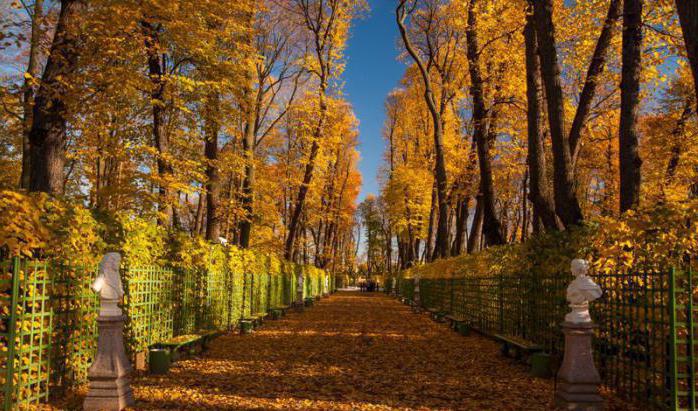
And in the next year, 1704, work began on another, no less important project. The summer garden in St. Petersburg is a unique park ensemble. It is located in the city center, directly opposite the aforementioned fortress. Today it is a kind of island, which is surrounded by rivers and canals on all sides.
Inspired by the French Versailles, Peter the Great intended to create something similar in Russia. According to some accounts, the emperor himself drew the initial plan of the complex.
Start of work
For planting greenery, a part of Usaditsa Island was allocated. However, it should be noted that the place for the arrangement of the park was not chosen by chance. In the XVII century, the Swedish baron lived in this territory. Its lands were dried from swamps and perfectly cultivated. Also, an excellent garden adjoined the walls of the mansion, on the "foundation" of which the Peter the Great Park subsequently grew.
The emperor very carefully chose plants for his "brainchild." At first, the land was replete with only annual flowers, which bloomed exclusively in the warm season. Therefore, the romantic name Summer Garden was immediately entrenched in the green island. In St. Petersburg, which was just starting to grow, such a site was a real miracle.
Initially, the project was done as a regular park. It was characterized by direct geometric shapes. Alleys, lawns, fountains and statues were symmetrical. Above the straight paths were neatly trimmed maples, lindens and oaks. Some of these trees have survived to our time.

Important customer
The first manager of this project was the architect Ivan Matveev. The master settled nearby and for many years ensured that the plans of an important client were carried out as clearly as possible. A man planted flowers in the park that the king himself chose. From the abundance of colors, the Summer Garden of Peter I more and more justified its original name.
At first, the territory occupied only a quarter of today's area. Therefore, one of the first tasks that the architect performed was to define the boundaries. Further, the monarch ordered to plant chestnuts on this earth, which they specially brought from Hamburg. Therefore, it was necessary to drain and process the particles of the earth, which were unsuitable for planting plants.
In parallel, canals and ponds were built, tons of soil were imported. Also, following the traditions of Europe, the emperor gave the order to build fountains in the park.
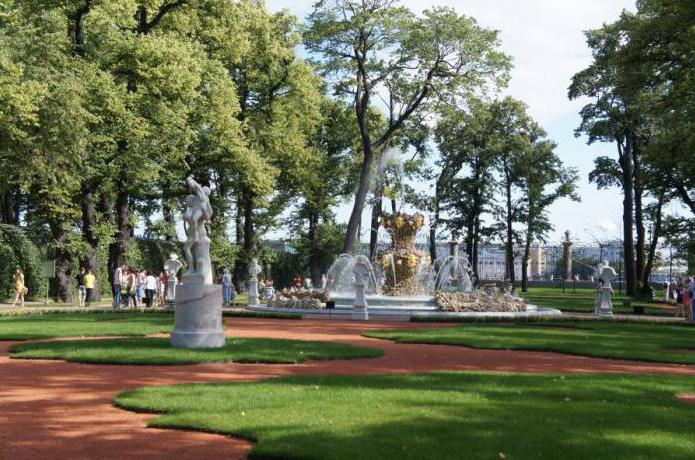
Party place
Green corners have become a wonderful addition to groves and flower beds. The walls there were bushes of lilac, jasmine and other fragrant plants.
Since 1718, various events have been held on the territory of the complex. To get into the square was possible only at the invitation of the emperor. Therefore, not everyone could enjoy the beauty that the Summer Garden exuded.
The working hours were really hard labor: from 5 p.m. until the morning. In order that the people did not disperse, Peter the Great ordered the gates to be closed. Guests became forced hostages.Official meetings and happy holidays were held here, victories and memorable days were celebrated. In the front part, tables were set with food and balls were held. However, the poor, bearded men and poorly dressed noblemen were not allowed into the territory.
In general, the project was finally formed by 1720. Then the square extended from the Neva to Nevsky Prospect.
Emperor City
The tradition of throwing balls and parties in the parks has become very popular. And since the 1750s, everyone who was well dressed was allowed into the Summer Garden in St. Petersburg.
In general, the complex could be divided into three parts. The front section is still preserved. Its borders extended to the Moika River. It is worth noting that it is this territory that today is called the garden.
Where the Mikhailovsky Castle is located, there was previously a royal city. It grew fruits and vegetables, which were served at the table of the imperial family. Exotic bananas and pineapples ripened in the greenhouses. Another highlight of the garden was Karpiev Pond. Different species of fish were found in the reservoir, which were specially transported from other rivers of Russia. Dishes from them often decorated the royal dinner. Also in the pool swans and geese swam. The third part of the park turned into the Mikhailovsky Garden.
The square has become a favorite vacation spot for many poets and prose writers. The geniuses of literature were so fascinated by the beauty of the garden that they repeatedly devoted their works to this green corner. In particular, in the works of Alexander Pushkin, Anna Akhmatova and Samuel Marshak, one can find lines about the island. The summer garden in St. Petersburg today inspires poets.

Main element
Of course, the ensemble would not have been completed without amazing fountains. After the death of the first architect, in 1710, the construction was started by popular and talented European masters.
Peter I could not imagine his garden without artificial geysers. Consequently, already before 1750 there were over 50 of them in the square. Some of the pool walls were decorated with gilded drawings. Pictures told stories from Aesop's fables. Almost all the fountains had their own names. Based on the name, the masters decorated the object. However, most of the information has not been preserved to our time.
At first, the pressure worked from horsepower. But very soon the emperor ordered a steam atmospheric pump from France. With this machine, the Summer Garden became a truly water town. The cost of equipment was of little interest to the ruler. The highlight of the fountains was that they were all different in shape and design.
However, after the flood in 1777 and hurricanes, all the basins went under water. When the then Empress Catherine II was offered to restore the fountains, she refused.
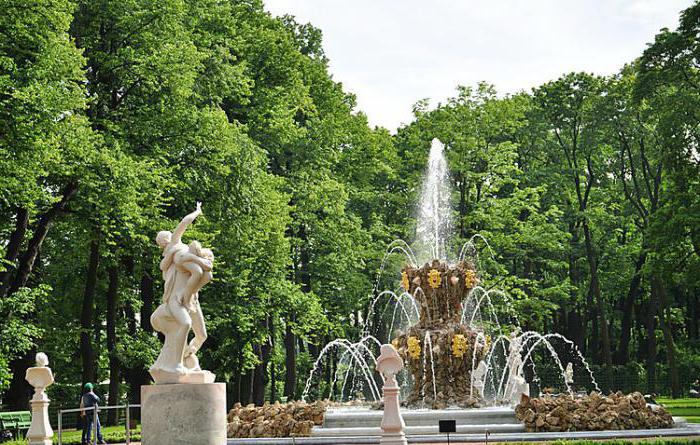
Luxury and chic
Researchers are now trying to restore and restore some of the lost objects. According to the finds, the museum workers make exact copies of the geysers and again open them to visitors.
The park was decorated with various stories that only an experienced tourist can read. At first Peter the Great had a plan to do something more than just decorate his garden. Therefore, each fountain has become a unique sculpture. Some figures were gilded.
Most of the statues were brought from Italy. It should be noted that in general, over a certain period of time, their number exceeded 250 pieces. However, today the sculptures of the Summer Garden are more preserved in the Hermitage and the royal residences.
The reason for the move was a negative climatic effect, frequent attacks of vandals and a flood. In 1777, one of the largest floods in history happened in the capital. As a result, many trees were affected by the large water. However, the most damage was done to statues and fountains. Of the luxurious collection of Greek and Roman sculptures, only about 80 figures have survived.
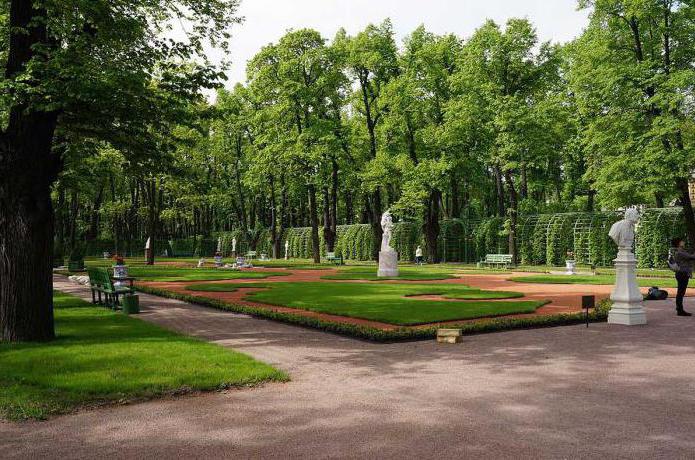
Great collection
All the statues that guests see in the park today are copies made of artificial marble. Now, in order to protect the busts from the destructive effects of weather phenomena, they are transferred to the winter period.
In every possible way, they try to preserve the Summer Garden. In autumn, the park is especially wonderful. This time of year in the city is very short. Therefore, many are trying to enjoy the landscapes of unflappable Greek figures in golden leaves.
The pearl of the park was the statue of Venus, which was given to the emperor by the Pope. This was the first figure of a naked Greek woman in Russia. Many residents of the city were embarrassed by a naked woman with a pale face. Both nobles and ordinary workers considered her vulgar and ugly. Therefore, the emperor was repeatedly asked to dress Venus. In order for the ill-wishers to do nothing to the Greek woman, security was assigned to her around the clock.
Unpromising future
The Summer Garden (St. Petersburg) leaves no one indifferent. The mode of operation is very convenient for both guests and residents. The gate to the park opens at 10:00 in the morning. The complex is open until 22:00. It should be noted that usually a day off is Tuesday. There is no need to pay for entry.
Now, despite the expensive and many years of reconstruction, the ensemble is in poor condition. He is not able to reflect all the greatness and chic of the times of Peter the Great. According to the researchers, it was easier to keep the complex in perfect shape before. Indeed, in the imperial period, the monarchs should issue a decree - and thousands of workers, peasants and slaves came to the city. The authorities were not worried about the conditions under which their subordinates would live and what wages they would require. The fact that the square requires tremendous changes should be told on a tour of St. Petersburg.
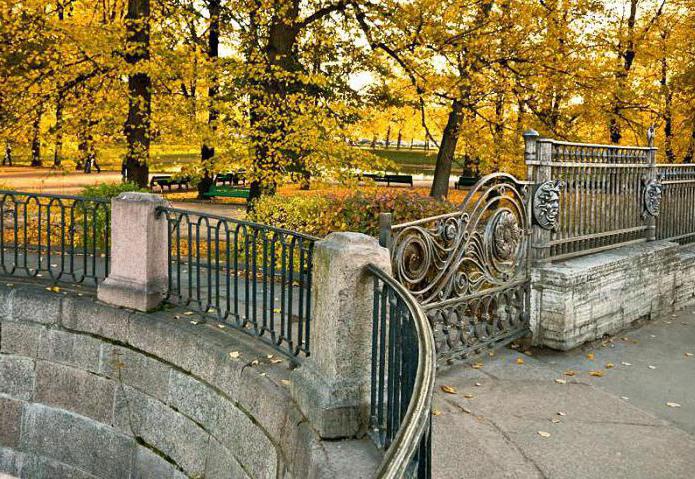
Peter the Great was fascinated by the luxury of European parks. In his dreams he imagined a garden that would not yield in beauty and wealth to Versailles itself. It is worth saying that the king’s wish came true.